I am very new on verilog. So this is my question:
Implement 16 bits ALU with 16 bit register. This project should meet the following requirement.
1. Design a 16 bitALU : Design a 16 bit ALU that X as input (eg. A,B..) and produces one 16 bit result.The ALU should perform the following functions. Minimum 5 operations for both ALU and LOGIC.
2. Design a 16x16 bit register file.
3. Design a control unit.
So my plan is to make a bunch of module that have operations in each module. Then i gather it at the test bench. But the problem is right now. The output seems to overlap and become red and x.
This is my Add module.
module Add(A,B,Y,S,clk,enb);
parameter BITS=8;
input clk,enb;
input [BITS - 5:0] S;
input [BITS - 1:0] A ,B;
output [BITS - 1:0] Y;
reg [BITS - 1:0] Y;
always @(posedge clk)
begin
if
((enb==1) || (S == 000))
begin
assign Y = A + B;
end
end
endmodule
Tolak module (Minus module)
module Tolak(A,B,Y,S,clk,enb);
parameter BITS=8;
input clk,enb;
input [BITS - 5:0] S;
input [BITS - 1:0] A ,B;
output [BITS - 1:0] Y;
reg [BITS - 1:0] Y;
always @(posedge clk)
begin
if
((enb==1) || (S == 010))
begin
assign Y = A - B;
end
end
endmodule
Darab module (Multiplication module)
module Darab(A,B,Y,S,clk,enb);
parameter BITS=8;
input clk,enb;
input [BITS - 5:0] S;
input [BITS - 1:0] A ,B;
output [BITS - 1:0] Y;
reg [BITS - 1:0] Y;
always @(posedge clk)
begin
if
((enb==1) || (S == 011))
begin
assign Y = A * B;
end
end
endmodule
GateOr module
module GateOr(A,B,Y,S,clk,enb);
parameter BITS=16;
input clk,enb;
input [BITS - 14:0] S;
input [BITS - 1:0] A ,B;
output [BITS - 1:0] Y;
reg [BITS - 1:0] Y;
always @(posedge clk)
begin
if
((enb==1) || (S == 011))
begin
assign Y = A | B ;
end
end
endmodule
GateAnd module
module GateAnd(A,B,Y,S,clk,enb);
parameter BITS=16;
input clk,enb;
input [BITS - 14:0] S;
input [BITS - 1:0] A ,B;
output [BITS - 1:0] Y;
reg [BITS - 1:0] Y;
always @(posedge clk)
begin
if
((enb==1) || (S == 100))
begin
assign Y = A & B;
end
end
endmodule
AND THIS IS MY TEST BENCH
module Maintb ();
parameter SIZE=8;
reg clk, enb ;
reg [SIZE-6:0] S;
reg[SIZE-1:0] A,B;
wire[SIZE-1:0] Y;
initial
begin
clk = 1'b0; enb = 1'b0;
end
// generate clock
always
begin
#(10) clk = !clk;
end
always begin
//#(10);
#10; enb = 1'b1; A=00000001; B=00000000; S=000; //add
#(10); enb = 1'b0;
#10; enb = 1'b1; A=00000001; B=00000000; S=001; //tolak
#(10); enb = 1'b0;
#10; enb = 1'b1; A=00000001; B=00000000; S=010; //darab
#(10); enb = 1'b0;
#10; enb = 1'b1; A=00000001; B=00000000; S=011; //or
#(10); enb = 1'b0;
#10; enb = 1'b1; A=00000001; B=00000000; S=100; //and
//#(10);
end
defparam dut.BITS = SIZE;
defparam dut1.BITS = SIZE;
defparam dut2.BITS = SIZE;
defparam gate.BITS = SIZE;
defparam gate1.BITS = SIZE;
Add dut (A,B,Y,S,clk,enb); //000
Tolak dut1 (A,B,Y,S,clk,enb); //001
Darab dut2 (A,B,Y,S,clk,enb); //010
GateOr gate (A,B,Y,S,clk,enb); //011
GateAnd gate1 (A,B,Y,S,clk,enb);//100
Endmodule

